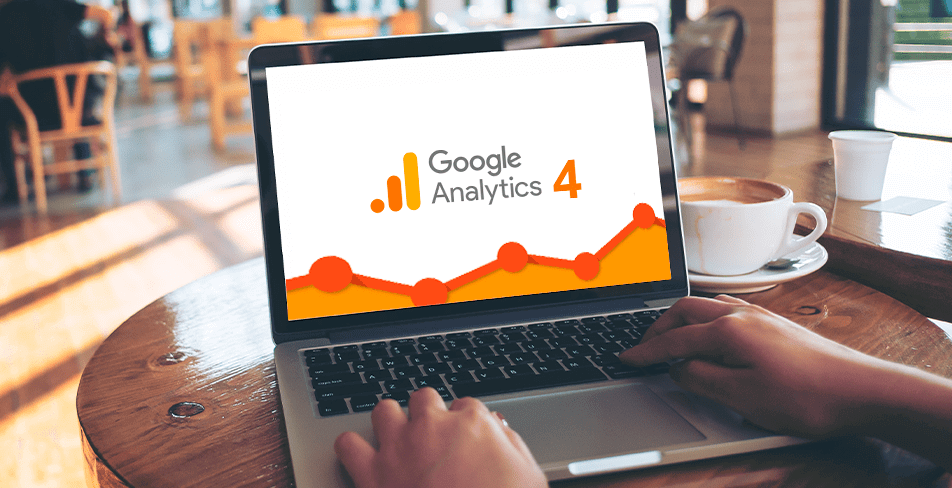
Redegal, Google Partner Premier agency 2025
The change from Google Universal Analytics to this new generation, baptized GA4, has a move date of July 1, 2023. Would you like to know how the new Google Analytics GA4 will affect ecommerce? Here are some frequently questions about Google Analytics 4.

The new generation of Google Analytics is here to stay. This is what the company has announced with the publication of its release date: July 1, 2023. On that day, Google Analytics Universal, as we know it, will stop processing and collecting our data, giving way to the new Google Analytics 4.
Google Analytics 4 is presented as a completely renewed tool that will allow businesses to obtain a considerable amount of very useful metrics. It is the most important update of Analytics in the last decade. This evolution will give us access to a significant number of changes in the interface and in the data model established so far.
It will also mean an increase in the return on investment of each campaign carried out by a company. In addition, it facilitates the organization of new reports to analyze the path of each client, allowing us to obtain a much higher performance than the one offered up to that moment.
Although the changes of this new tool are still several months away, it is important to start taking into consideration what these improvements will mean in order to continue accessing the metrics.
The upgrade from one model to another will affect the way of doing business seen so far. The GA4 ecommerce conversion is marked by the following variables:
This new update brings new functionalities with it, with the aim of providing more valuable insights and thus helping even more to make business decisions in order to improve ROI.
The emergence of the new Google Analytics, in the era of activation, means a complete integration with the introduction of machine learning, people-based insights and more direct data activation. Data collection can only create value for a brand if it is collected and structured to build a single point of connection that links across devices and platforms across the entire user journey – both on and off the web.
We are at a point where linking marketing and technology means placing increasing value on data assets in an ecosystem where privacy and data quality challenges are paramount.
The move to GA4 will see data collection take a much broader view, with a diverse range of interests. It will also move to offer much more agile data exploration, the ability to explore data and therefore understand it, giving way to analysis and discovery of new insights.
This new update will undoubtedly mark a turning point, especially in terms of audiences. The audience creation system will now be more flexible, with overlapping audiences, multi-platform attribution and event generation when the user joins an audience.
It’s time to say bye, bye to cookies. The new Google Analytics still measures sessions (it uses browser cookies), but it is intended for a cookie-free world where user activity is measured by artificial intelligence. This version primarily uses data extracted from device identifiers and contextual event analysis to identify users and align them with their activity.
Thanks to this new approach, Google aims to lower the level of dependency on cookies through the use of machine learning. In this way, it seeks to record events or conversions without the need for the user’s explicit consent. This is the company’s solution to anticipate and improve the conditions of analytics after the conflict unleashed as a result of the problem with privacy and how complicated it is to collect new data.
Is GA4 better than Universal Analytics? There are many differences between Universal Analytics and Google Analytics 4 data models. The main differences between GA4 and UA are the following:
The main difference is the shift from a measurement model based on page views to a model focused on event measurement. The fact that there are two different tools is due to the fact that today not all Internet traffic comes from web pages, but also from mobile apps and other sources. Across all of these content types, events allow us to more effectively measure the data collected.
Universal Analytics data does not migrate to the new Google Analytics. The measurement model incorporated in this new update is very different from the one seen so far. So much so that the historical information will remain in the previous version, on which at the time, we recommend a checklist of optimizations for UA. However, the sooner GA4 is activated, the more historical information will be available in the new web property.
By now you already know part of how GA4 works, the powerful version that Google will incorporate to its system and how it can help your business. Would you like to know more about how it can improve your activity? Do not hesitate to contact us, our digital analytics team will help you to successfully overcome the transition. How far do you want to go?
You may be interested in our latest posts

Redegal, Google Partner Premier agency 2025

What is AI Overviews and how will affect SEO?

Bluesky: What is it and how to create an effective strategy

The Super Bowl in a data-driven era
Discover the best digital strategies for your brand
Hi!
We are looking forward to hearing more about your digital business.
Tell us... What do you need?
Fill in the form or call us at (+44) 2037691249